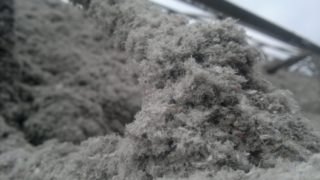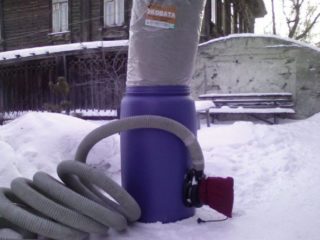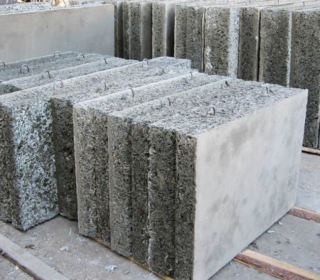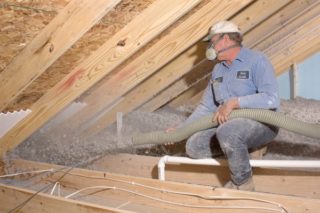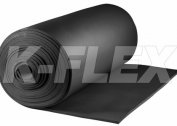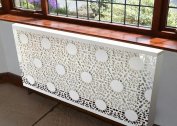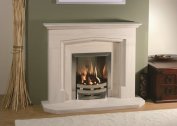Energy efficient buildings are constructed using heat-insulating materials. The idea of using cellulose insulation is not new. Its production began in Germany in 1928. The product from natural raw materials is safe for health, easy to use and effective. Ecowool insulation is gaining popularity in Russia. Dozens of production lines have been launched that provide the market with quality products. The material is used in the construction of private and apartment buildings, industrial and office buildings.
The main properties of ecowool
Cellulose insulation is a loose gray fibrous material. The basis of organic insulation is the waste of the pulp industry and waste paper. They make up 80-81% of the volume. Contaminated recyclables, printing defects, and cardboard packaging are taken into production. The remainder is accounted for by antiseptics and flame retardants, additives that prevent rotting and fire of the material. Boric acid (12% of the mass) prevents the spread of fungi, prevents rotting. Borax (7-8% of the volume) slows down the ignition of the material.
Additives improve the properties of cellulose wool, repel insects and rodents. These are natural substances, they are non-volatile and low toxic. Boric acid and borax will not harm health; they are used in medicine and agriculture. Thanks to the flame retardant treatment under the influence of an open flame, the insulating material does not burn, but is charred. At the same time, it does not emit dangerous toxic smoke like polystyrene. There are no harmful substances in ecowool.
Ecowool characteristics and properties:
- thermal conductivity coefficient - 0.037-0.042 W / m * K;
- density - 28-65 kg / m3, when applied wet to 75 kg / m3;
- vapor permeability - 0.3 mg / mchPa;
- sound insulation - 60 dB with a layer of 10 cm;
- combustibility class - G2, moderately combustible;
- sorption hydration - 16% in 72 hours.
The heat insulator has a long service life, during which the performance characteristics remain almost unchanged. The loose structure of the material ensures normal air exchange.
Material benefits
Ecowool insulation has pros and cons. The advantages of the material include:
- Thermal insulation properties - the loose structure of the material containing air prevents heat loss.
- Moisture absorption and evaporation - a hygroscopic material is able to absorb and give off water. Wetting does not worsen the characteristics of the insulation, with an increase in the humidity parameter by 20%, the thermal conductivity increases by 5%. The material retains water in the upper layers, preventing deep penetration.
- Sound insulation - The fibrous structure of the heat insulator helps to damp sound waves. Bulk material covers small and large gaps, cutting off extraneous noise.
- Seamless technology - when applying the insulation in a wet way, a uniform layer is formed. When insulating the walls with ecowool, the mass under pressure fills all the voids, leaving no areas for the penetration of cold. Dry backfill is no less effective, cotton wool is leveled over the entire surface, and no seams are formed.
- Environmental friendliness and safety - the building material has a natural origin, therefore it is not dangerous for people. It contains no toxic components. For bonding the mass, the natural component of lignin is used.
- Chemical inertness - when applying the material to metal structures, corrosion processes do not occur.
Cellulose insulation is available at an affordable cost. Costs increase when choosing a wet application method.
It is difficult to find building materials without flaws. When choosing a heater, they focus not only on positive qualities. Information about the disadvantages of ecowool will help to competently organize the process of thermal insulation at home. The main problems when using the material:
- For high-quality thermal insulation, the purchase of special equipment is necessary. Domestic class models cost about 20 thousand rubles.
- Shrinkage - an unpleasant feature of the insulation is a decrease in volume. On a vertical surface, it reaches 20% of the initial fullness. Voids create bridges of cold. Experts advise to use the wet method of applying the material for vertical surfaces, and lay it with a margin on horizontal spans.
- Low stiffness of insulation requires the installation of a cellular frame.
- Hygroscopicity - the disadvantage of ecowool is the ability to absorb moisture.
- Insufficient heat resistance - cellulose begins to smolder when heated. It can not be used for insulation of chimneys and furnaces.
- When applied wet, it takes 2-3 days for the coat to dry.
Most of the minuses of the insulation are easy to level. If you work with the material, taking into account the recommendations of the manufacturer, the advantages of ecowool outweigh the shortcomings.
Release form and application methods
Soft loose material is compacted before sale. Rolls and briquettes wrapped in plastic film are formed from it. It is convenient to transport ecowool in plates, it takes up a smaller volume. Before work, briquettes are fluffed up, increasing their size by 3-4 times.
Thermal insulation of buildings occurs in a dry and wet way. Bulk pulp wool is recommended for horizontal surfaces. To create an insulating layer on the walls, it is advisable to wet the material. Work is done manually or using blowing machines. With the wet application method, a pump with water is added to the pneumatic installation.
Wet method
When warming the house with an ecowave in a wet way, an adhesive or water composition is created. Its spraying occurs with the help of blowing units with various nozzles. The lignin contained in cellulose provides the binder quality of the mixture. Before applying insulation, it is necessary to mount a wooden crate. The wet mass is sprayed evenly. The protruding sections are cut with a knife and reused. Blowing the composition under pressure allows you to fill all the cracks, provides a seamless coating.
For thermal insulation of metal and concrete structures, the wet-glue method is recommended. The raw materials are wetted with water and glue, diluted in proportions according to the manufacturer's instructions. The method is used on vertical surfaces and the ceiling, it provides increased adhesion to any material. Due to the need to purchase special equipment, the wet insulation method is used less often than dry backfill. It is suitable for large areas requiring thermal insulation.
Dry method
Bulk material is laid manually or blowing equipment is used. The first option is popular when doing eco-friendly warming with your own hands. The density of the backfill depends on the site - for floors, the flow rate is 35-40 kg / m3, and for walls it will take 60-65 kg / m3. Before filling, it is necessary to fluff the compressed mass. For this, a drill with a nozzle is used.
If the installation of ecowool is carried out in an automated way, an enclosed space with a hole equal to the diameter of the hose is preliminarily created.Dry fibers the builder without problems himself falls asleep in the floor frame. The manual method is time consuming, but cheaper.
Comparison of ecowool and other heaters
 Ecowool or basalt insulation have a different composition and characteristics. Cellulosic material is made from organic raw materials, and basalt slabs are made of stone. Mineral wool is easier to lay thanks to production in the form of mats and slabs. It does not burn and has high rigidity. Ecowool is inferior to basalt insulation in terms of fire safety and strength, but has a significant advantage in the form of lower thermal conductivity. The loose fibrous structure contains more air to create insulation.
Ecowool or basalt insulation have a different composition and characteristics. Cellulosic material is made from organic raw materials, and basalt slabs are made of stone. Mineral wool is easier to lay thanks to production in the form of mats and slabs. It does not burn and has high rigidity. Ecowool is inferior to basalt insulation in terms of fire safety and strength, but has a significant advantage in the form of lower thermal conductivity. The loose fibrous structure contains more air to create insulation.
Laying cellulosic material is more time-consuming, but in the end, heat loss will be minimal. In addition, a paper product is more environmentally friendly than glass and basalt fiber boards. Both materials are prone to moisture accumulation. When water gets in, insulation from cellulose almost does not change its characteristics, and mineral wool begins to pass the cold.
A foam insulator is applied to the surface in liquid form using spray equipment. Penoizol is also available in the form of plates and chips. Its thermal conductivity is similar to that of cellulosic material. The installation process of heaters is largely similar, they use the filling and filling methods. Of the disadvantages of penoizol, the ability to crack during shrinkage of the building is noted.
With the same degree of thermal insulation, ecowool has an inherent advantage - it is made from natural raw materials. The material is not harmful to health. The use of waste from the pulp industry prevents the growth of landfills.
Scope of application
Ecowool is used in the construction and repair of buildings. This is the best option for insulation and soundproofing of frame houses. The eco-friendly product has found application in the construction of private houses, public buildings, educational institutions. Scope of application includes:
- facades of buildings and industrial structures;
- walls, floors and floors of residential buildings;
- roofing, attics and attics.
Insulation can be used for external and internal insulation of rooms. The market of building materials presents products of Russian and foreign brands. When choosing ecowool, you should pay attention to the type of flame retardants. Experts advise buying safe insulation with borax.

